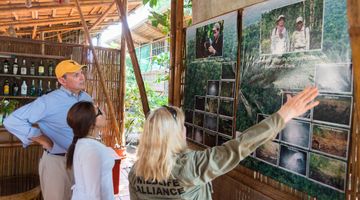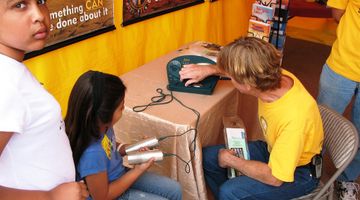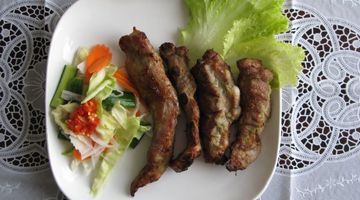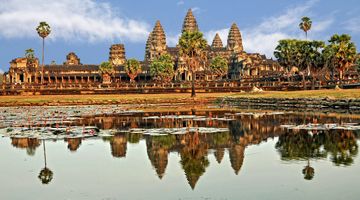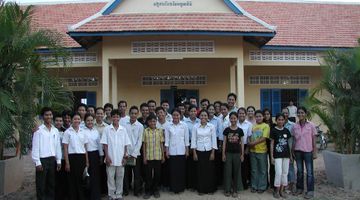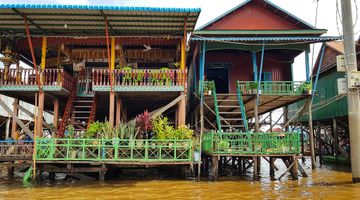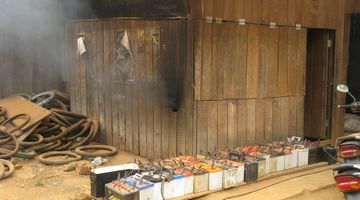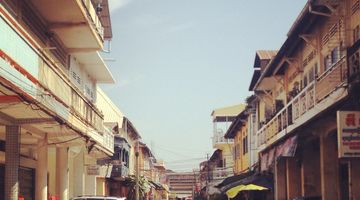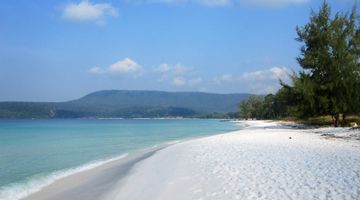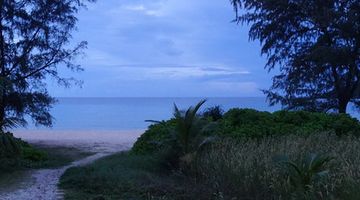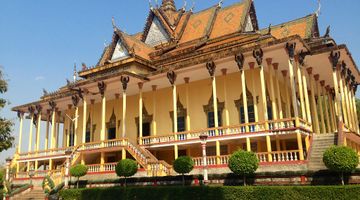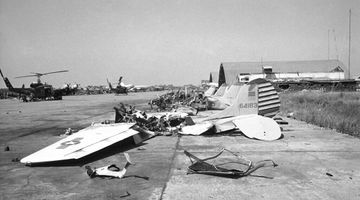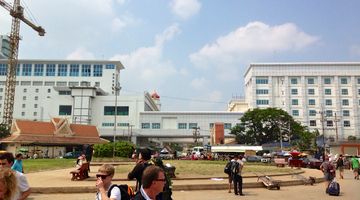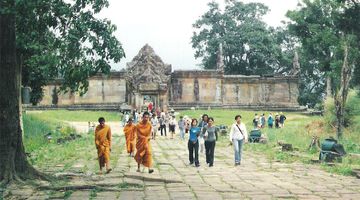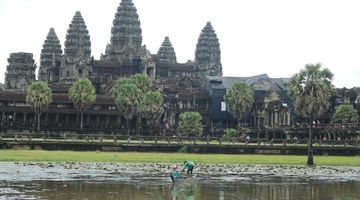Cambodia Visa Tips and How to Apply for Visa
Types of visas
The two basic types of Cambodian entry visa are tourist (T) and business (E). Both of them entitle their holders with a 30-days stay in the country although there are 2 principal differences between them.
The first difference lies in the number of entries each visa type enables. The tourist visa type allows for a single entry whereas the business one endows its holder with multiple entries to the country.
The other difference is the prolongation option. The tourist visa can be prolonged only once unlike the business one which can be a subject to numerous prolongations for quite a number of validity periods starting from one month up to one year.
Visa fees
Though the differences are quite significant this can hardly be observed in the price. The business visa fee is $45, the tourist visa is $35.
How to obtain the visa
There are two options for obtaining an entry visa to Cambodia.
One option is to apply for an entry visa right upon arrival (VOA). The other one is to log on to the Ministry of the Foreign Affairs of Cambodia official website before your planned trip and apply for the so-called e-visa online following some few simple instructions.
E-visa or VOA?
To apply for an e-visa, you will have to submit valid passport details, digital photo, and credit card particulars. The cost of the visa is US$45 and it is supposed to be ready three days upon it has been applied for.
The validity period of the e-visa is 3 months once it has been issued.
It allows a 30-days continuous stay in the country on the single-entry basis.
Yet care should be taken when deciding between the two above options since it is only at quite few entry points to the country where the e-visa is recognized by the officials.
These entry points are the two international airports of Cambodia (Siem Reap and Phnom Penh) and three overland crossings: Cham Yeam (Koh Kong), Poi Pet (Banteay Meanchey) and Bavet (Svay Rieng). The silver lining though is that the e-visa holder is free to leave the country through any of the exit points available.
Surely, while the VOA (on-arrival entry visa) looks easier to get with its the sole requirement just to have two passport-like photos with you at the entry point (cash goes without saying), be forewarned that it is so easy to be involved in an unexpected argument with the Cambodians officials at the border over any small thing that might lead to “extra charging” for no particular reason.
Thus if you prefer to spare your time, nerve and cash upon arrival to the border crossing you should seriously consider getting the on-line visa before you go.
Visa extention
As mentioned above duration of both the visa types can be prolonged.
The validity of the tourist one can be prolonged only once at as much as $50 for another period of 30 days, whereas the business type visa can be prolonged till kingdom come. The extension period is left to a holder’s discretion, yet limited to the range of periods of one month (at $50 cost), two months (at $80 cost), six months (at $160 cost) and finally one year period which will put a strain of $290 on a traveller’s purse.
In both the cases, the prolongation process takes a couple of days and it might be done smoother if applied for through an agency.
To recap, if you are seeking a long sustainable stay in Cambodia, make sure to apply for a business visa right from the start to secure an infinite prolongation at just $5 in future.
Each day of overstay, i.e. each day beyond your visa permitted period, will lead to a $6 fine which is sure to accumulate if the period remains neglected.
Visa scams
To avoid any regrets in the hindsight, do realize that obtaining the visa at the border may result in a far too heavy exchange rate you will have to fall into line with, should the perky officials require your visa be paid in baht. Needless to say that the exchange spread is pocketed by the above officials. The Koh Kong entry point is particularly notorious for such a dodge. Thus, you should either take care of the visa in advance or make sure not to cross the border at Koh Kong.
Two more popular visa scam issues is to make you obtain your Cambodian visa through a ‘Cambodian consulate’ somewhere along the road to the border and to pay for a “VIP border crossing’, the latter usually offered by the officials themselves.
Entering the country
There are two kinds of border transition in Cambodia: local and international.
The former is meant only for the local folks dwelling on the adjacent territories who shuttle incessantly across the border using some kind of a border permit. The latter as seen from the title are open to all international arrivals. As for the international entry point, there is quite a number of them in Cambodia. The 11 official overland crossings account for daily numerous frontier transitions between neighbouring Vietnam, Laos, and Thailand. The three international air terminals (Phnom Penh, Preah Sihanouk, and Siem Reap) manage thousands of incomers who prefer to enter by air. The seaport of Sihanoukville is responsible for sea-loving travellers.
One of the most commonly used Thailand overland crossings is Poi Pet (Banteay Meanchey).
We tried to put our answers to topic-related questions we give in support into one text easy enough to read here in this FAQ. Hoping you will find your way through the jungle! :)
From Bangkok to Siem Reap
There are several bus operators who serve this line, but we did not find many reliable enough to add them to our network. You might get an offer as low as 150 Baht from Khao San Road to Siem Reap, but be very very careful with that. They will totally over-charge you with the visa service and if you don't use them you will be left behind. In general you should be aware that the less you pay for the transportation the higher the risk is that you pay during the journey a higher price for something you don't have to pay for if you go with Giant Ibis or fly.
Our advise to get to Cambodia:
It takes a whole day, but it is worth doing it (once). Start your journey early in the morning from the northern bus terminal Mochit. Arrive there some time before 8 o'clock, especially if you do not know this huge terminal. There are a couple of alternatives.
A) The fun way
You could book the bus with us to Rong Klua Market, the border market. If you go to Aranyapratheet town you will need another transport to the border.
When you arrive at the border keep in mind that everybody who reaches the counters in front of you will cause you several minutes of waiting. Unless you want to stroll around on the market you should head straight forward to the counter. Do not talk with anyone who is not an official officer (with proper shoes and in uniform). The people you need are government employees and they do not come to you. You have to talk to them. So everybody who approaches you might just want to rip you off.
When you get to the border stay on the left side, go down the walkway with many signs in Thai language to the house. On the second floor (which in Thailand is the one above the ground floor) you can process the departure from Thailand.
The next step is the Cambodian health inspection where you have to fill out a form and they check your body temperature. The whole thing is not very organized. If you do not have a visa yet you find a small house on the right. Pay 30 US$ and if you pay 100 Baht extra for express service you will save some time. If there are not many people you might gain 3 minutes. If there are many others you might consider it. If you don't want to waste your money, take the line next to the express counter. If there are no express customers they call people from the next line. You will need a passport picture and you can pay in Thai Baht, but it is more expensive than paying in Dollars.
Continue your walk and on the right side you get into the border station where they will fill your passport with stamps.
When you are in Cambodia people will tell you how to take the official shuttle-bus to the bus terminal. This shuttle-bus is free of charge.
The bus to Siem Reap costs 9 Dollar on the Cambodian side, but if you get to an empty one you might have to wait until it is full. This can take hours. An alternative here is to talk to some fellow travelers who are on the same trip and ask to share a taxi. This will cost you around 45 Dollar, is quicker and brings you to your place directly.
B) Transport Co
You go to the counter of Transport Co. and buy a ticket to Siem Reap. This is more expensive and the duration of the trip depends on how quick or slow all passengers get through immigration. Recently Transport Co. has started to collect the tiny fee of 5 Baht per passenger in cash on the bus to facilitate hassle-free border crossings on weekends and holidays. Please do not worry to pay this small amount, it will speed up the immigration process significantly.
C) Train
You take the train instead of the bus to the border. The trains take longer and tickets can be bought only one day in advance, so online booking does not really make sense. You can buy your ticket at the counter the same day. This train is usually not fully booked.
D) The recommended way: Giant Ibis
Giant Ibis is probably the most professional and reliable private operator in Cambodia, the service and quality of vehicles is as close as it gets to the North American and European standards that you may be used to. Buses on this route usually have Wi-Fi as well as individual power sockets, which is a rarity. As any frequent traveler will know, being able to charge your phone is incredibly useful for when you arrive at an unfamiliar destination and are trying to work out how to get to your hotel. Recent reviews show that the stewards in these buses are really helpful when it comes to filling out the forms for your border crossing.
The whole process becomes much easier when you decide to fly.
From Siem Reap to Bangkok
To go back to Bangkok is quite similar. There are several bus operators who serve this line, but we did not find any reliable enough to add them to our network. There is a direct bus connection from Siem Reap to Bangkok. There are Nattakan/Transport Co. Ltd direct buses that go from Siem Reap to Bangkok for about $30. You can purchase tickets in Siem Reap at any guesthouse or travel agent, or directly at the Nattakan Transport office on Sivatha Blvd. The bus leaves at either 8:00 a.m. or 9:00 a.m. every day and takes between eight and ten hours to arrive. We suggest to take the earlier bus! The direct bus from Siem Reap to Bangkok is definitely the easiest option, although perhaps not the fastest and certainly not the cheapest. The best part about the direct bus is that most of the time you can keep your luggage on the bus while you walk through the border. Arrival at Mo Chit is estimated at 4pm, however it can be as early as 3.15 or closer to 5pm.
You could also take another bus to the border, walk across and then take a bus from Rong Kluea Market, the border market, to BKK.
The buses go every 30 minutes or so and you should depart before 13h00 to be sure to arrive at the railway station on time to catch your train.
It will take you about 5 hours to get to BKK from the border. You most probably will arrive at the northern bus terminal, Mochit. From there you can take a taxi for about 60 Baht to the MRT Metro stations Khamphaeng Phet or Mo Chit. This subway brings you all the way down to the railway station. The trip takes about one hour.
Keep in mind that leaving Cambodia is easy and takes only 5-15 mins. Thai immigration is a few meters down the road on the left. Expect to wait here for several hours (seriously). Typical times from joining the Thai immigration queue to entering Thailand range from 2 to 4+ hours. If the queue is long you'll be waiting outside in full sun for part of the time.
Once inside go for the immigration queue second from the right. The furthest right desk is for paid visas but there aren't many of these so when there's no queue they call others over from the nearest line so it can be significantly faster. So when you arrive at the border please head straight for immigration. If you fool around, your fellow passengers will stand in front of you in the cueue.
If you somehow miss the bus, if they are fully booked or if something else goes wrong, you can also take a taxi from the border to Bangkok. This will cost you around 1,900 Baht directly to the Hua Lamphong station.
The only border passage between the Laos and the Cambodian territories is Dong Kralo (Stung Treng) yet the e-visa is not accepted by the officials there. Being one of the four entry points to Vietnam, the Bavet (Svay Rieng) crossing is the most commonly resorted to by far. Travelers can get their VOA at the all of the above points and two of them recognize the Cambodian e-visas.
The opening hours of the most of the entry points are from 8.00 till 20.00 except for the Dong Kralo (Stung Treng) point which operates a shorter time.
Leaving the country
Note that the departure tax still exists in Cambodia. When using air routes to leave the country it is included in the ticket fare while leaving the country via the overland exits is free from it.

